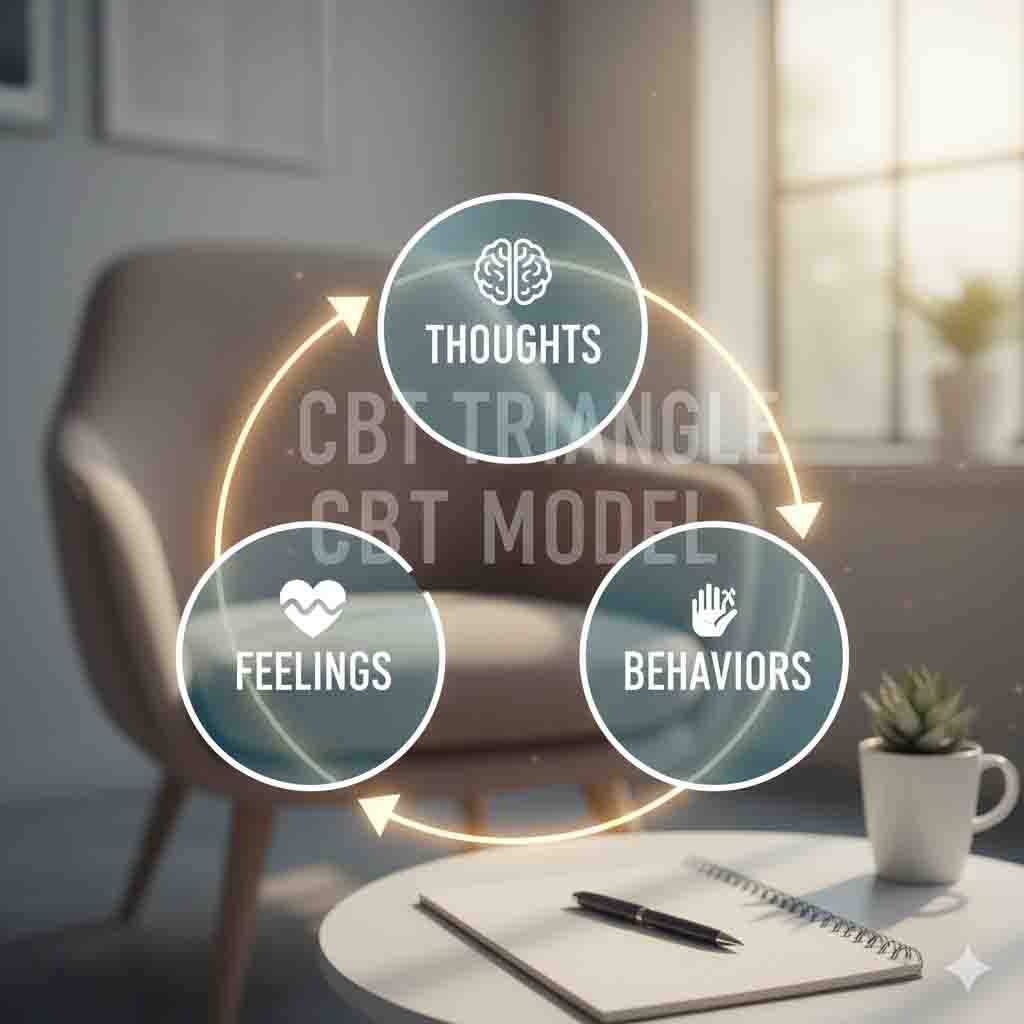Cognitive Behavioral Therapy
IN ARVADA, CO

CBT
From Mental Fog to Clear Perspectives
We often believe that situations cause our feelings, but CBT teaches that it is actually our interpretation of those situations that drives our emotions. If you feel stuck in a loop of worry or negativity, we help you catch those automatic thoughts, challenge them, and find a clearer, more balanced path forward.
What is CBT?
Cognitive Behavioral Therapy (CBT) is a practical, goal-oriented therapy that focuses on the powerful connection between your thoughts, feelings, and behaviors.
When we are stressed or anxious, our thinking often becomes distorted. We might catastrophize (“It’s all going to go wrong”) or engage in black-and-white thinking (“I’m a total failure”). CBT helps you:
-
Identify these automatic negative thoughts.
-
Challenge their accuracy with evidence.
-
Replace them with realistic, helpful perspectives.
The Evidence Base
CBT is widely considered the “gold standard” for many mental health conditions due to its massive evidence base. Thousands of clinical studies have demonstrated its effectiveness.
The science relies on the Cognitive Model. Neuroscience research confirms that by altering the neural pathways associated with negative thinking patterns (a process called cognitive restructuring), we can physically change the brain’s emotional response. It is a collaborative, skills-based approach that empowers you to become your own therapist over time.
Conditions We Treat with CBT
-
Depression & Mood Disorders
-
Generalized Anxiety & Worry
-
Social Anxiety
-
Obsessive-Compulsive Disorder (OCD)
-
Insomnia (CBT-I)
-
Perfectionism & Burnout
What Can I Expect When I begin EMDR Treatment?
History & Treatment Planning ? 1–2 sessions (60 min each)
We review your history, current challenges, and therapy goals. Together, we identify targets for EMDR.
You can share as much or as little detail as you want. Even a “headline” memory is enough.
Preparation 1–2 sessions (60 min each)
We focus on safety and coping tools: grounding, calm-place imagery, and practicing bilateral stimulation. You’ll learn what to expect during EMDR.
Goal: You feel safe, supported, and in control.
Assessment ⏱ 15–20 minutes
We lightly “set the scene” with:
-
A snapshot or simple “label” of the event
-
Negative vs. positive belief
-
Distress rating (SUD 0–10)
-
Believability rating (VOC 1–7)
You don’t have to give details. Numbers or labels are enough.
Desensitization (Processing) 20–40 minutes
You briefly focus on the target while your therapist guides bilateral stimulation (eye movements, taps, or tones). After each short set, you share what shifted.
You can say “lighter,” “same,” or “different”—no need to tell the story.
Processing often takes 2–6 sessions per target, depending on complexity.
Installation ⏱ 5–10 minutes
We strengthen the positive belief (e.g., “I am safe now”) with bilateral stimulation until it feels true and steady.
Body Scan ⏱ 5 minutes
You scan from head to toe to notice any leftover tension. If something shows up, we briefly process it until your body feels calm.
Closure ⏱ 5–10 minutes
At the end of every session, we make sure you leave grounded and calm—even if processing is unfinished.
You’ll never be sent home raw or destabilized.
Re-evaluation ⏱ 10–15 minutes
At the start of the next session, we check:
-
How does the memory feel now?
-
Is the positive belief holding?
-
Did anything new surface?
Then we decide on the next step together.

